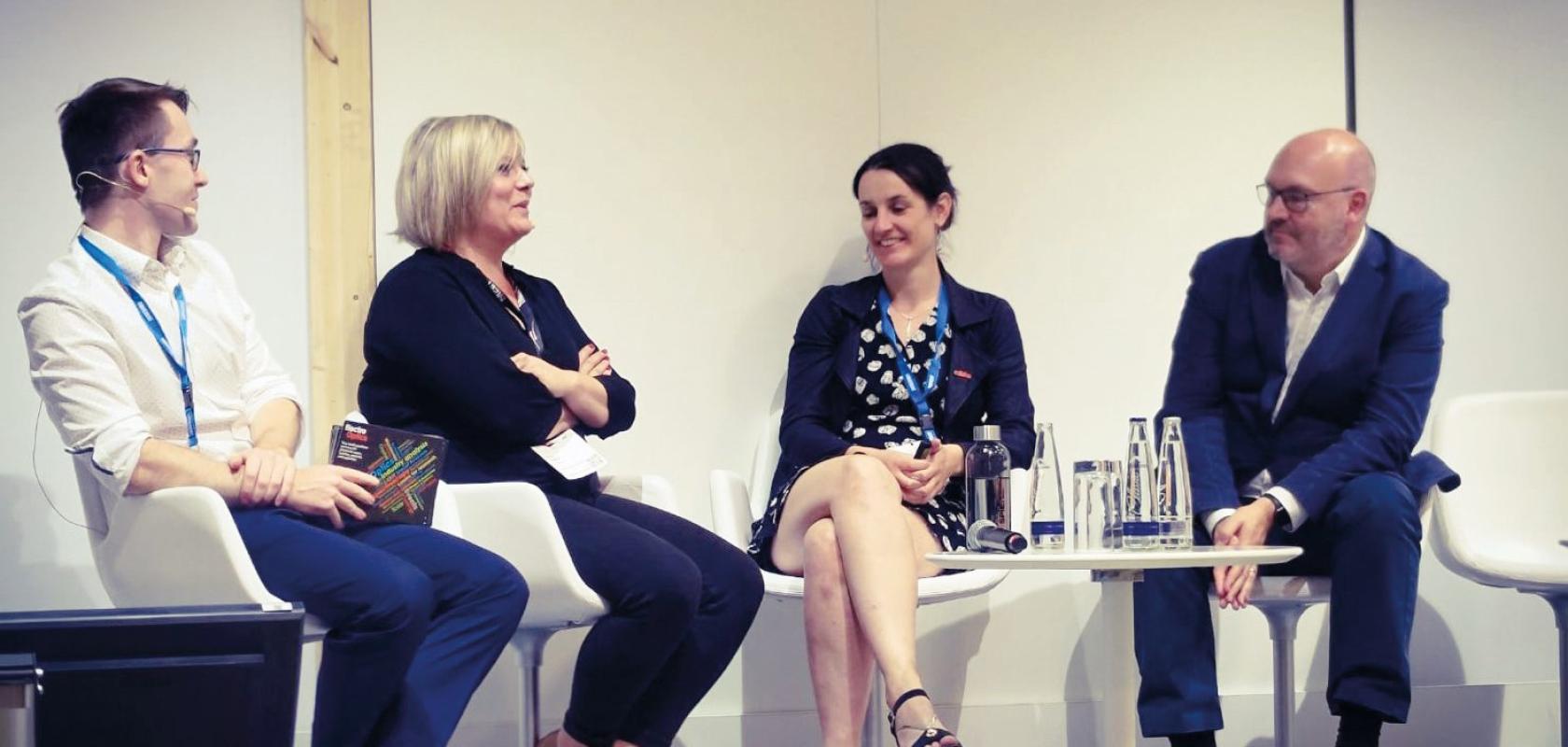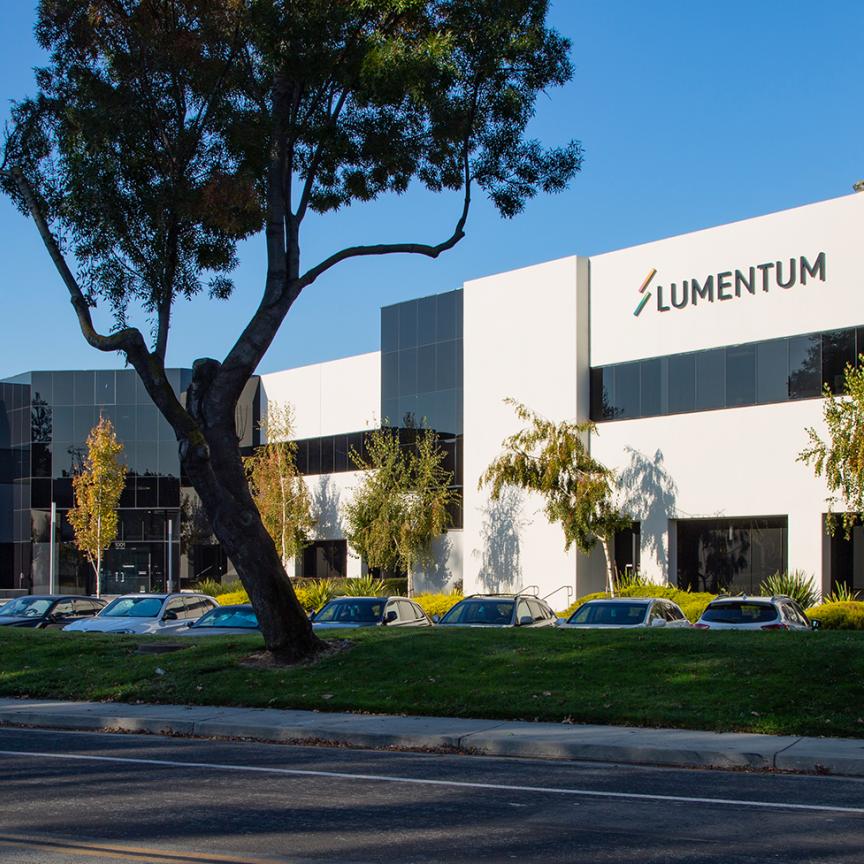Electro Optics had the great pleasure of hosting a panel discussion at the Laser Materials Processing Forum at this year’s Laser World of Photonics.
Our own Mark Elliott and Matthew Dale interviewed two members of The Photonics100 working in the field of ultrafast laser materials processing: Gwenn Pallier, Product Line Manager for Industrial Applications at Cailabs, and Dr Laura Gemini, Group Manager for Nanoscale Laser Processing & Health Applications at Alphanov.
Gwenn and Laura joined us on stage to discuss the latest beam shaping solutions and integrated systems under development that are enabling ultrafast lasers of increasing average power to be wielded in high-throughput surface texturing, which shows promise across a wide range of industries and applications.
EO: In which markets and industrial applications are ultrafast lasers seeing uptake?
Gwenn Pallier, Cailabs: Some of the biggest orders ultrafast laser manufacturers are receiving are coming from the display manufacturing market, which is particularly prominent in Asia. Here ultrafast lasers are being deployed for applications such as OLED panel cutting and drilling. They are also being used increasingly for wafer dicing & cutting in the semiconductor industry.
However, as more average power becomes available and the throughput of ultrafast laser processing increases, more applications and markets are beginning to open up. For example, a promising market for this technology that is expected to grow dramatically in the near future is battery manufacturing, where ultrafast lasers can be used to texture foils. Such textured foils are key to producing faster-charging batteries with larger capacities.
Laura Gemini, Alphanov: The productivity of ultrafast laser processing was limited up until a few years ago, when we finally had access to hundreds of watts of average power. This was a real breakthrough for the technology that has enabled us to access a lot of new markets using surface functionalisation – we can now achieve process throughputs comparable to several existing industrial applications.
With it we can modify the wettability of surfaces, which could be applied in the aerospace industry to create anti-icing surfaces. We can also produce self-cleaning and bacteria-repellent surfaces, which could be applied in food-handling, hospitals and transportation. These surfaces could also be applied anywhere biological cells interact with materials, for example in life sciences for medical implants or microfluidics. We can also change the optical properties of materials, which allows us to serve the laser and optical components markets.
EO: What level of throughput can be achieved by combining high-power ultrafast lasers with the new beam shaping technologies?
Laura Gemini: Alphanov was one of the first centres in Europe to install the 350W Tangor femtosecond laser system from amplitude in 2018, which was done within the framework of the ‘Tresclean’ project. Here we demonstrated the possibility of achieving a much higher laser texturing throughput on large surfaces. For example, using 200W average power, 10MHz repetition rate, and a scanning speed of 200m/s, we textured a mould of around 1m2 surface area at a rate of 12cm2/s, which we then used to produce polymeric tanks for dishwashers. This process enabled us to save a lot of energy and water, both in the manufacturing and the subsequent operation of the dishwashers. And so we were really happy with the results of this project, which was one of the first demonstrations of high throughput surface functionalisation of large parts.
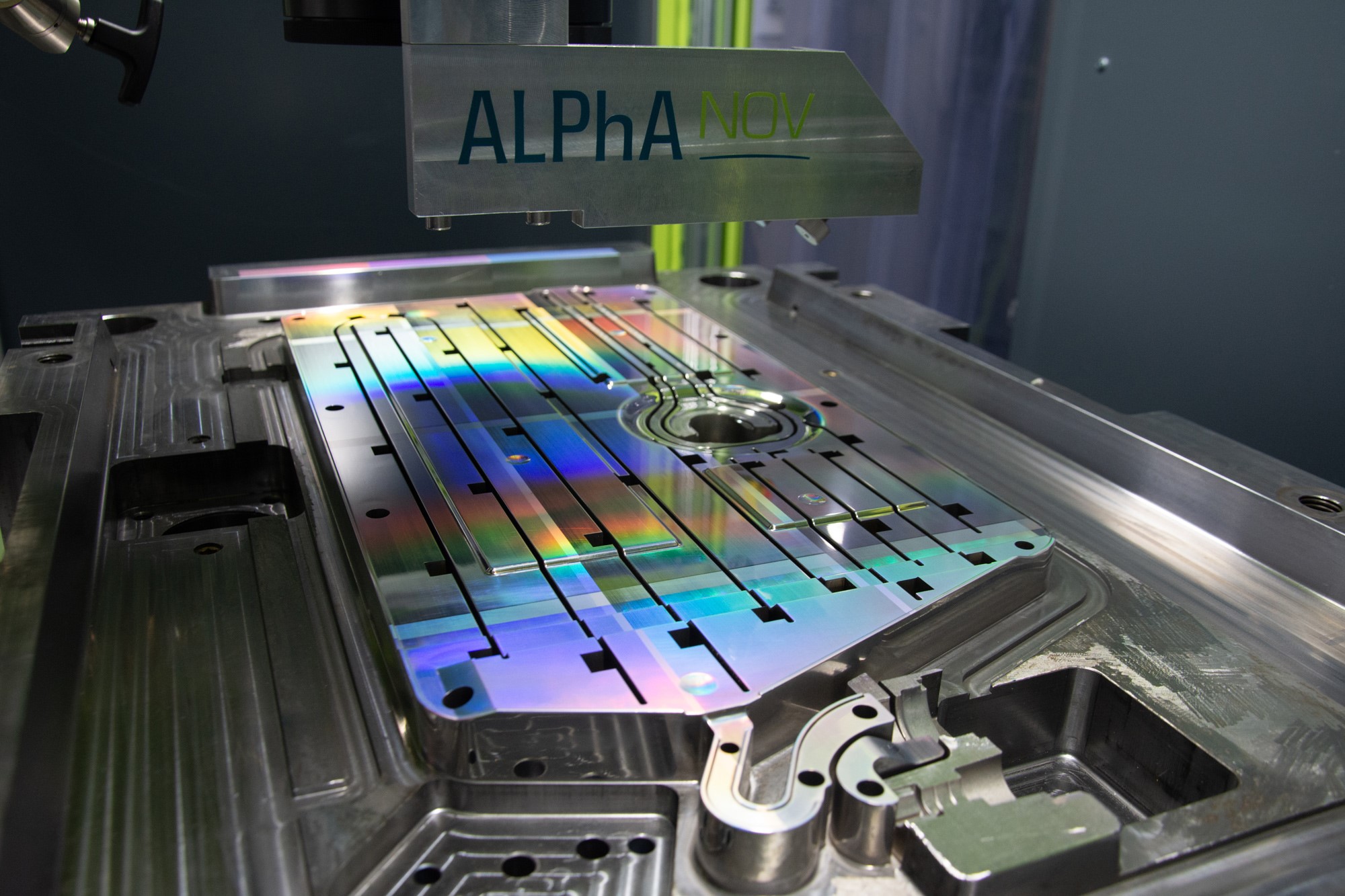
An injection mould textured within the Tresclean project will be used to transfer antibacterial nanostructures onto the surface of a polymeric tank employed in dish-washers (Image: Alphanov)
Another project that followed on from Tresclean was ‘Newskin’, which aimed to improve the throughput of surface functionalisation one step further. A roll-to-roll machine was developed to texture several metres of metallic sheet at a rate of 15cm2/s using 320W average power, a repetition rate of 5MHz and a scanning speed of 50m/s. So it's very quick, and the process throughput is really high – we’re talking about square metres per minute. And this is all thanks to the increasing commercial availability of high power femtosecond laser systems, new beam shaping modules and high speed polygon scanning heads.
Gwenn Pallier: Within the Newskin project Alphanov tested two different beam shaping modules from Cailabs, the Canunda-Split and the Canunda-Pulse.
The Canunda-Split was employed to divide the beam and achieve direct laser interference patterning (DLIP) at the focal point, which is what is used to texture surfaces. This module makes life much easier for Alphanov as they do not have to precisely align optical components such as DOEs and prisms. The resultant square-print laser beam offers excellent control of the beam overlapping, which makes the overall process so much easier to control – offering a larger process window for a more reliable and stable process. In addition, much less dispersion occurs through the optical line compared to using thicker optical components, which enables a higher contrast of interference pattern and therefore better control over the structures (and therefore surface properties) being produced. In a separate experiment it was also shown that switching to a top-hat beam shape enables a five-time increase in homogeneity when surface texturing stainless-steel using DLIP.
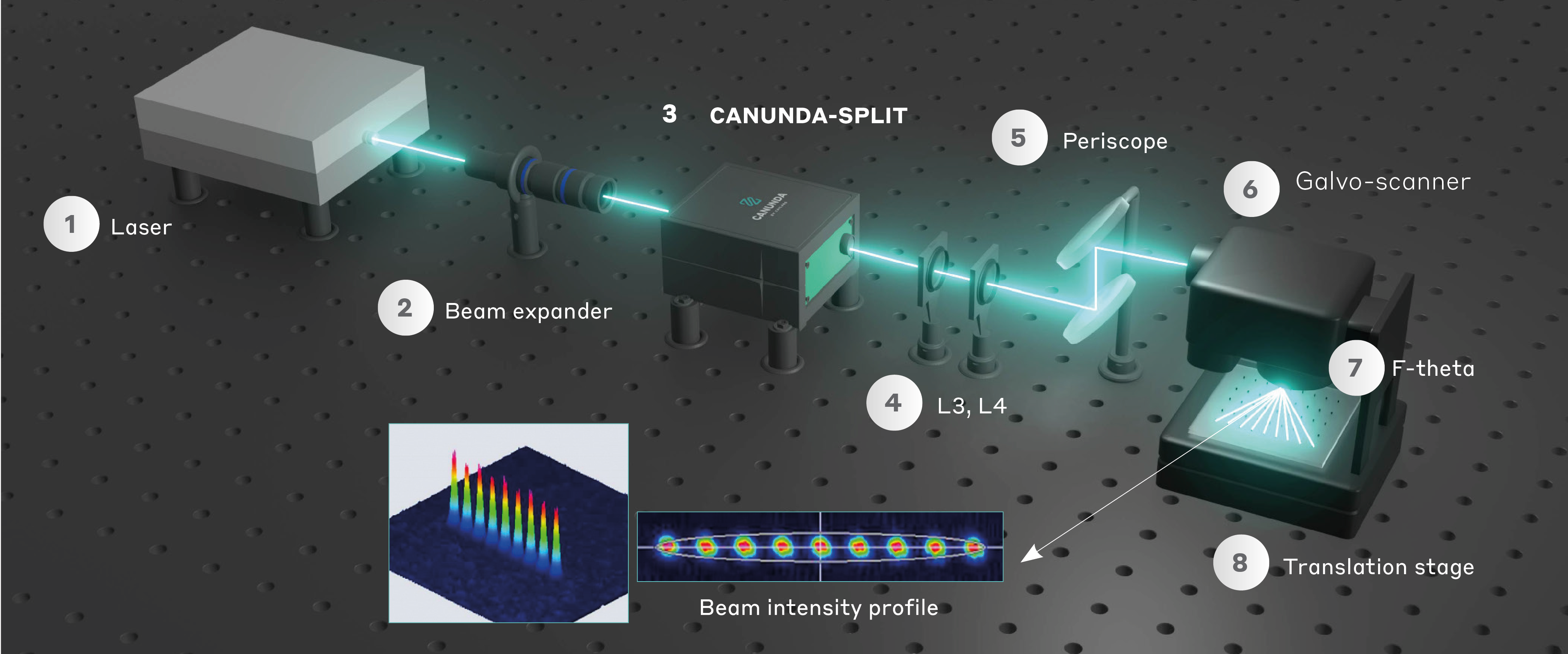
Cailabs' Canunda-Split can divide a beam and achieve direct laser interference patterning (DLIP) at the focal point, which can be used to texture surfaces with nanostructures (Image: Cailabs)
The Canunda-Pulse was used in the production of surface riblets on aluminium, which can offer anti-drag effects in turbulent flows. The aim of the study was to compare the advantages and disadvantages of using a Gaussian laser beam or a square print (top-hat) beam. Alphanov demonstrated that the module can be used to generate a square print laser beam, which grants higher control when producing riblets, enabling very stiff riblets to be produced in just one pass. This is not possible when using a Gaussian beam. And so it was found that the beam shaping module really enables the process throughput to be increased dramatically while achieving excellent surface texturing results. Alphanov demonstrated that switching from a Gaussian beam to a sharp square print beam using a 1,030nm femtosecond laser enables surface riblets to be produced more than 10-times faster.
EO: What challenges could still prevent the widespread uptake of ultrafast laser surface texturing?
Laura Gemini: From my point of view, the main issue today is the capacity to integrate machines that are really able to deliver high resolution ultrafast laser surface texturing of complex 3D products at high throughput. This will require the development of robotic systems capable of delivering positioning accuracy and repeatability in the region of a few tens of micrometres, or even less. This is very necessary if we are to reach the full exploitation of this technology.
At the beginning of the year, we started to integrate an Amplitude femtosecond laser onto a robotic arm, directing the beam down a hollow core fibre. We were able to achieve nanometric resolution texturing with this system at very high throughput and at different angles. This was a first for us, and so we are really looking forward to continuing working on this to really achieve the holy grail of high-throughput 3D complex surface functionalisation.
Gwenn Pallier: From my side I see the main challenge being the speed at which ultrafast lasers can currently be produced. As far as I know, ultrafast laser manufacturers struggle to deliver all the lasers currently in demand across the world. Although these companies are growing in size and capacity, it’s still not enough. Ramping up production throughput will therefore be crucial if ultrafast lasers are to serve rapidly growing applications such as battery manufacturing – especially if the production of combustion engine vehicles is to cease in the EU from 2035, as is currently being decided on between European parliament, the Commission and EU member states.
Laura Gemini: Additionally, while the availability of high average power femtosecond lasers has been a huge breakthrough, the cost of the technology still has to come down further. As much as we can increase the throughput of ultrafast laser processing using scanners and beam shaping to make it exploitable by industry, both the sources themselves and the cost of integrating the lasers has to come down. The production processes of these laser sources will therefore need to be optimised further if the cost is to come down sufficiently.
EO: Are there any other entities you’d like to mention that are aiding the industrialisation of ultrafast laser surface texturing?
Laura Gemini: We can see a lot of startups emerging in the field of laser-based surface functionalisation, which was something we really didn’t have up to five years ago. One of these is Fusion Bionics, a Dresden-based spinout from Fraunhofer IWS developing industrial modules for DLIP-based processes that are looking very promising – so much so that they were a finalist at this year’s Innovation Awards at the Laser World of Photonics! We are looking forward to collaborating with them. Another one is Biomimetic, a Crete-based firm which is the first company to commercialise laser-treated glass for anti-fog and anti-reflective applications. Both these startups are doing very impressive work, and I’m looking forward to seeing even more firms such as these emerging in the coming years.
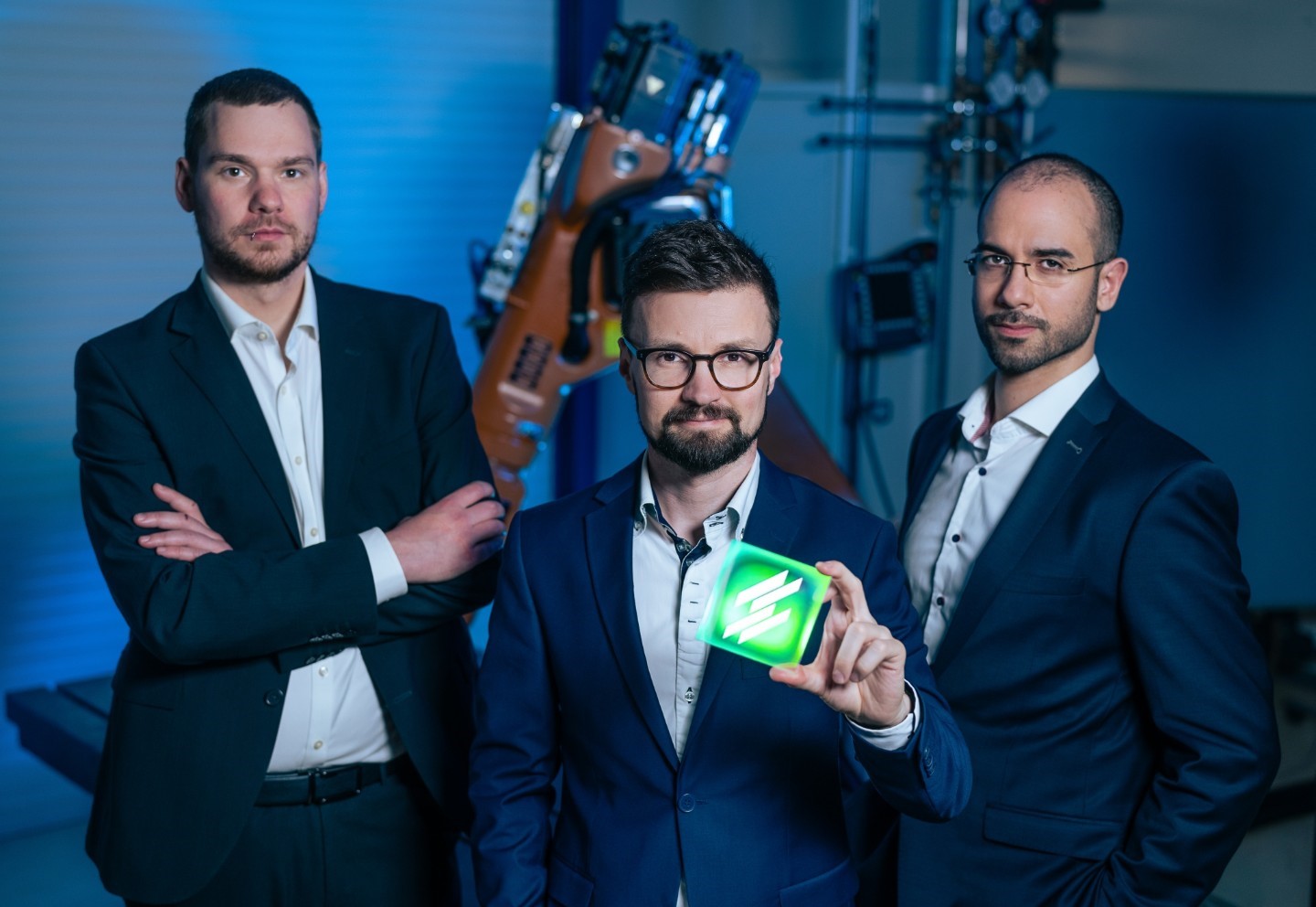
Laura Gemini of Alphanov noted that startup Fusion Bionic shows great promise for commercialising ultrafast laser surface texturing technology. The firm was nominated as a finalist at this year’s Innovation Awards (mage: Ronald Bonss)
Gwenn Pallier: One project I’d like to mention is the Multiflex project, carried out by partners including Amplitude, Fraunhofer ILT, and Lasea. In Aachen at Fraunhofer ILT, an industrial-scale prototype laser machine has been developed that brings together ultrafast laser sources with beam shaping equipment to enable high-throughput processing. They are in the process of calibrating and aligning the system, with the project set to end very soon. For those that are interested in seeing this machine, I recommend attending the AKL conference next year at Fraunhofer ILT’s premises, where they allow attendees to tour their institute and see all the various projects they are working on. This machine should be working nicely by then.
EO: And finally, what made you choose photonics as a career?
Gwenn Pallier: When I was very young, around five years old, I really wanted to invent a colour…however I eventually realised that this would be impossible, as nature had clearly already invented all the colours! Later on in life, when I was around 15, I wanted to be a cosmonaut and get to space. And so I concluded that a good path to enabling that would be to study optical engineering, which I then went on to do. While this has not yet led me to space, I’ve had the great pleasure of working at Thales on optical mirrors that have since gone up into space on satellites, and so this is the closest I’ve gotten so far to getting up there!
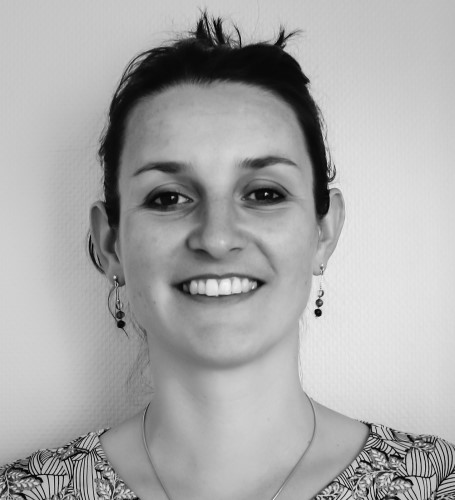
Gwenn Pallier of Cailabs has worked on optical mirrors that have since been sent into orbit aboard satellites
Laura Gemini: My love for photonics came from the discovery of how we can use lasers to make nuclear fusion a reality. Nowadays, as we saw from one of the World of Photonics Congress keynotes this year, it's currently a very hot topic – there are a lot of hopes on the progression of this technology. So I did my master's thesis on laser processing for tokamaks. Since then I’ve worked on multiple laser applications and to this day continue to be driven by the hope of a greener and more sustainable future.

Dr Laura Gemini of Alphanov aspired for a career in photonics after learning how lasers can be used to facilitate nuclear fusion

